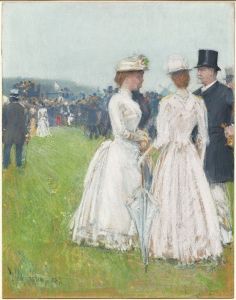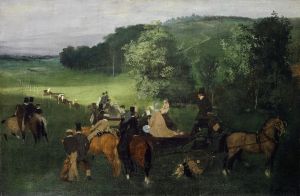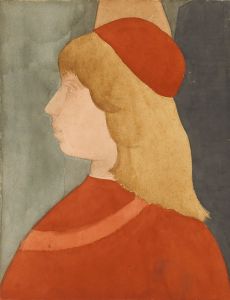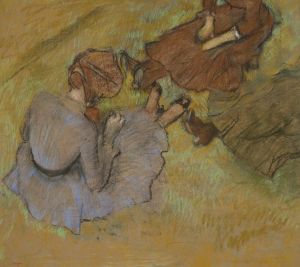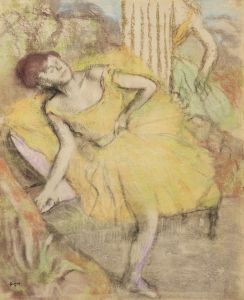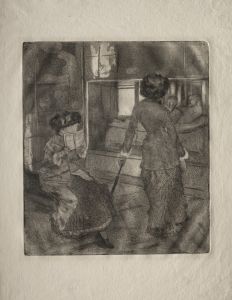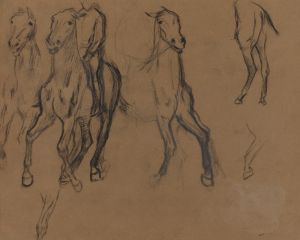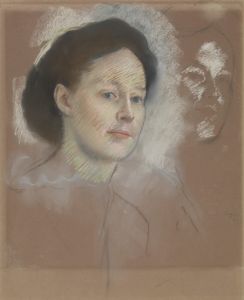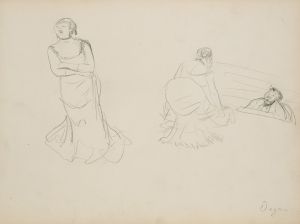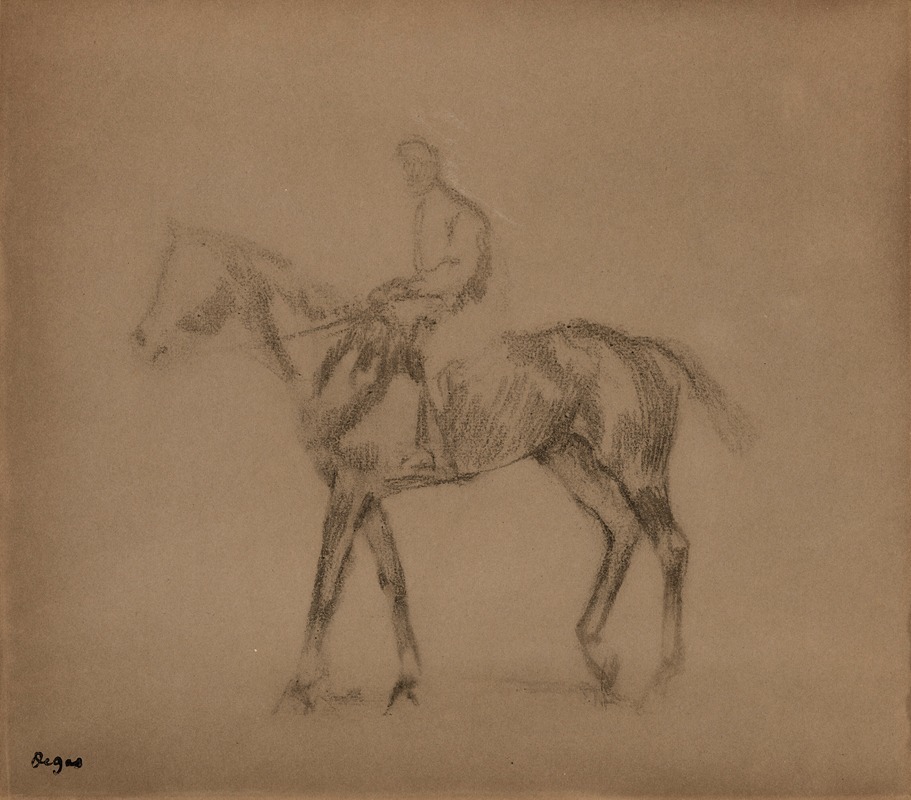
Jockey à cheval
A hand-painted replica of Edgar Degas’s masterpiece Jockey à cheval, meticulously crafted by professional artists to capture the true essence of the original. Each piece is created with museum-quality canvas and rare mineral pigments, carefully painted by experienced artists with delicate brushstrokes and rich, layered colors to perfectly recreate the texture of the original artwork. Unlike machine-printed reproductions, this hand-painted version brings the painting to life, infused with the artist’s emotions and skill in every stroke. Whether for personal collection or home decoration, it instantly elevates the artistic atmosphere of any space.
"Jockey à cheval" is a painting by the renowned French artist Edgar Degas, who is celebrated for his innovative contributions to the world of art during the late 19th century. Degas, born in 1834, was a prominent figure in the Impressionist movement, although he preferred to be associated with Realism. His works often focused on capturing movement and the human form, and he is particularly noted for his depictions of dancers, women at work, and horse racing scenes.
"Jockey à cheval" is one of Degas's many explorations of equestrian themes, a subject that fascinated him throughout his career. Degas's interest in horse racing was not merely a reflection of the sport's popularity in France during his lifetime but also an opportunity for him to study and depict motion, a central concern in his artistic practice. His equestrian works often feature jockeys and horses in various stages of movement, showcasing his keen observation skills and his ability to render dynamic compositions.
The painting "Jockey à cheval" exemplifies Degas's mastery in capturing the fluidity and grace of horses and their riders. His approach to this subject is characterized by a focus on the anatomy and movement of the horse, as well as the interaction between the jockey and the animal. Degas's technique often involved a combination of oil paints and pastels, which allowed him to achieve a rich texture and depth in his works. This particular painting reflects his adept use of color and light to convey the energy and tension inherent in horse racing.
Degas's equestrian paintings, including "Jockey à cheval," are notable for their compositional innovation. He frequently employed unusual angles and cropping, influenced by the advent of photography, which was gaining popularity during his lifetime. This approach allowed him to create a sense of immediacy and movement, drawing the viewer into the scene. His use of perspective and framing often gives the impression of a fleeting moment captured in time, a hallmark of his style.
In addition to his technical prowess, Degas's work in this genre also reflects his interest in the social aspects of horse racing. The sport was a fashionable pastime among the Parisian elite, and Degas's paintings often include subtle commentary on the social dynamics and class distinctions associated with it. However, his primary focus remained on the aesthetic and formal qualities of the scene, rather than overt social critique.
"Jockey à cheval" is a testament to Degas's enduring fascination with movement and his ability to convey it through his art. His equestrian works continue to be celebrated for their dynamic compositions and innovative techniques, which have left a lasting impact on the art world. Degas's legacy as a master of capturing the essence of motion and the human form is evident in this painting, which remains an important part of his oeuvre and a significant contribution to the Impressionist movement.





